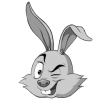AI for racing game?
I have read the document "http://www.red3d.com/cwr/steer/"
but there are some issue with the path following....the agent will run a "S" path along the defined path (straight line) (it's hard to follow the path smoothly). Are there any good idea to solve the issue or "are there any other paper(document) for the AI of racing game?"
Thank for any help, and sorry for my poor english.
Best regards,
John.
[Edited by - JohnStupid on January 29, 2007 5:00:06 AM]
January 29, 2007 11:37 AM
Mr Reynolds has a nice article, but it is Not really suitable for Racing Simulations.
Mainly because he focuses on how to make smooth *looking* paths, wheras a real racing sim would be more concerned with the *physics* of the car vs the track.
Mainly because he focuses on how to make smooth *looking* paths, wheras a real racing sim would be more concerned with the *physics* of the car vs the track.
However, there are a couple of very good points with Reynolds stuff. One, the group ideas of not colliding with your peers is very valid in racing. Also, a lot of racing sims use "path following" where they follow invisible lines on the course... either the optimal one or others that are sub-optimal but realistic. Those do come into play in racing sims.
Dave Mark - President and Lead Designer of Intrinsic Algorithm LLC
Professional consultant on game AI, mathematical modeling, simulation modeling
Co-founder and 10 year advisor of the GDC AI Summit
Author of the book, Behavioral Mathematics for Game AI
Blogs I write:
IA News - What's happening at IA | IA on AI - AI news and notes | Post-Play'em - Observations on AI of games I play
"Reducing the world to mathematical equations!"
Quote: Original post by JohnStupid
the agent will run a "S" path along the defined path (straight line)
This is the basic problem in closed loop control systems based on error feedback. Reynolds' steering behaviours are akin to basic proportional control. You can improve upon their performance (at the cost of extra computation) by reverting to standard PID control principles. If you're experiencing oscillations in your controlled error signal, add a differential term. That is, the control signal should be proportional to the error and to its first derivative. If you need more information on this, grab any introductory textbook on Control Theory (PIDs are covered extensively, as is the theory of closed loop control and error feedback control), or you can post your question(s) here and I (and others) would be happy to help you understand this issue further.
Cheers,
Timkin
This topic is closed to new replies.
Advertisement
Popular Topics
Advertisement








